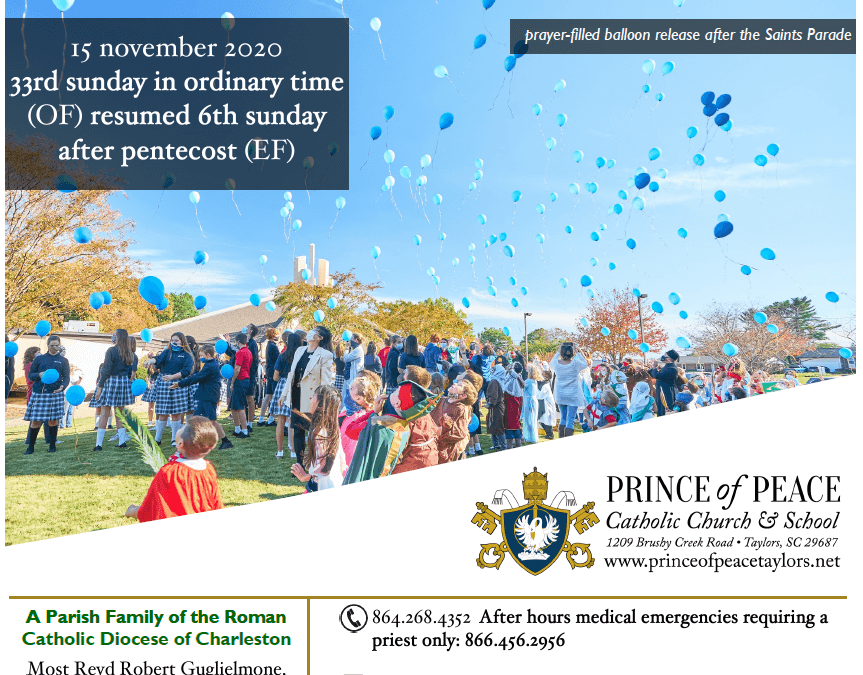
15 November 2020 Bulletin
Click to read the bulletin for 15 November 2020 here!

Click to read the bulletin for 15 November 2020 here!
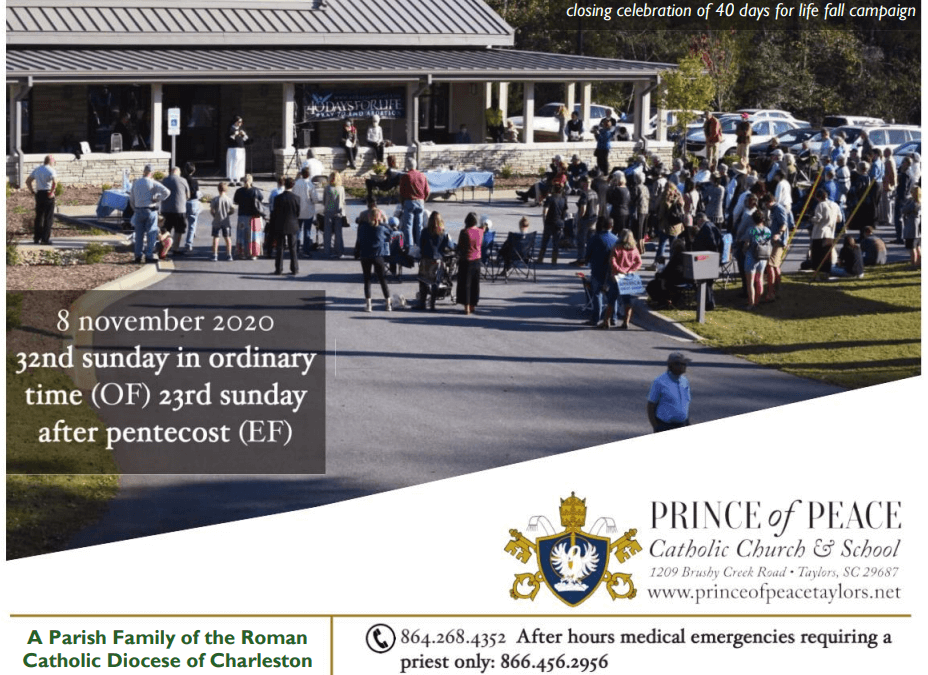
Click to read the 8 November 2020 Bulletin here.
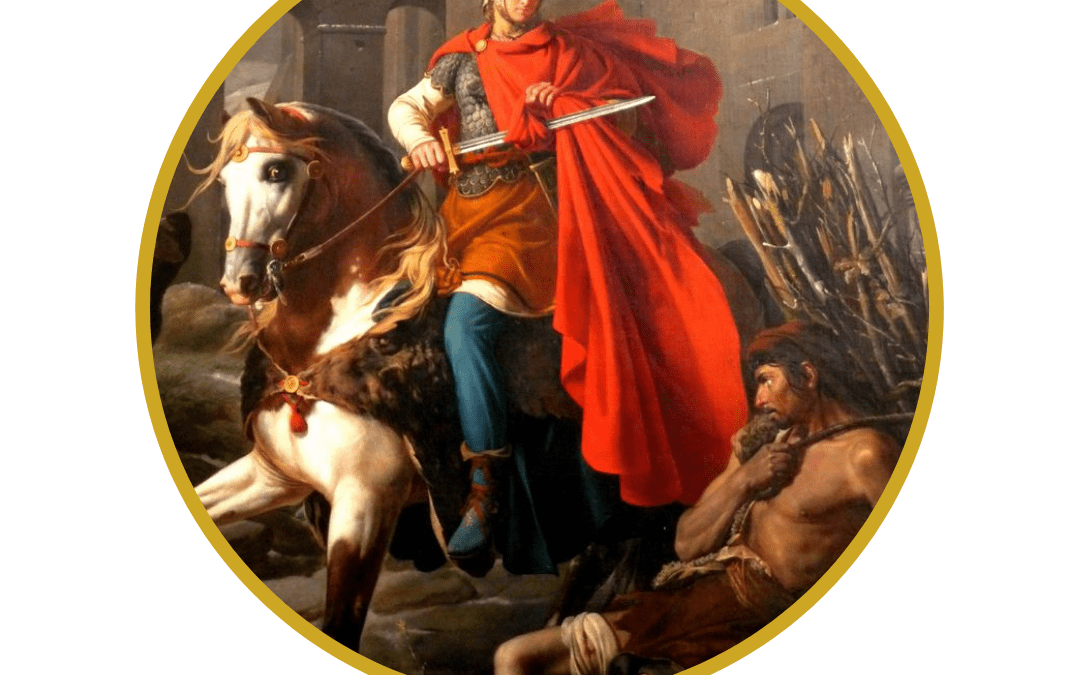
Born to pagan parents, this son of a veteran was forced at the age of 15 to serve in the army. Martin was baptized a Christian at age 18. He lived more like a monk than a soldier. One of the most famous stories associated with Martin happened while he was in the army: Martin came across a poor, naked beggar at the gates of Amiens who asked alms in Christ’s Name. Martin had nothing with him except his weapons and soldier’s mantle; but he took his sword, cut his own cloak in two, and gave half to the poor man. That night, Christ appeared to him clothed with half a mantle and said, “Martin, the catechumen, has clothed ME with his mantle!” At age 23, Martin refused a war bonus and requested dismissal from the army. He told his commander: “I have served you as a soldier; now let me serve Christ. Give the bounty to those who are going to fight. But I am a soldier of Christ and it is not lawful for me to fight.” He was accused of cowardice and after great difficulty, was discharged. Martin then dedicated himself to God’s work. He traveled to Tours where he began studying under Hilary of Poitiers (a doctor of the Church). Martin was ordained as an exorcist. Martin also became a monk. He established a French monastery near Poitiers. He lived there for 10 years, forming his disciples and preaching throughout the countryside. The people of Tours demanded he become their bishop. Martin did not wish it (was so reluctant that he hid in a barn full of geese which honked loudly and gave him away to the archbishop!). He thus became bishop of Tours and served faithfully. Along with Saint Ambrose, Martin rejected putting heretics to death. He worked against the Arian heresy, paganism, and the Druid religion. He was an extraordinary evangelist and won many to the Christian faith. Once the devil appeared to him and spoke as if he were Christ. Martin recognized the deceit. Three dead persons he raised to life. When he was an old man, Martin fell into a painful fever. Although he longed for Heaven, Martin prayed: “Lord, if your people still need me, I do not refuse the work. Your will be done.” Sick and suffering, he was called to heaven on November 11, 397. Saint Martin of Tours is a patron of the poor, soldiers, horsemen, alcoholics, tailors, and winemakers.
Ideas for celebrating this feast day at home:
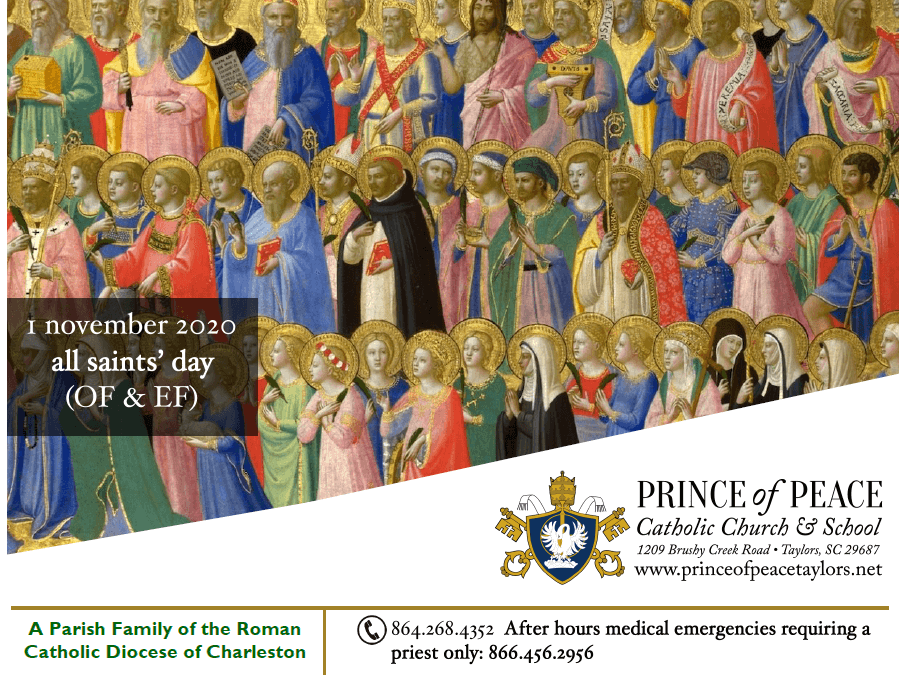
Click to read this week’s bulletin: 1 November 2020 Bulletin
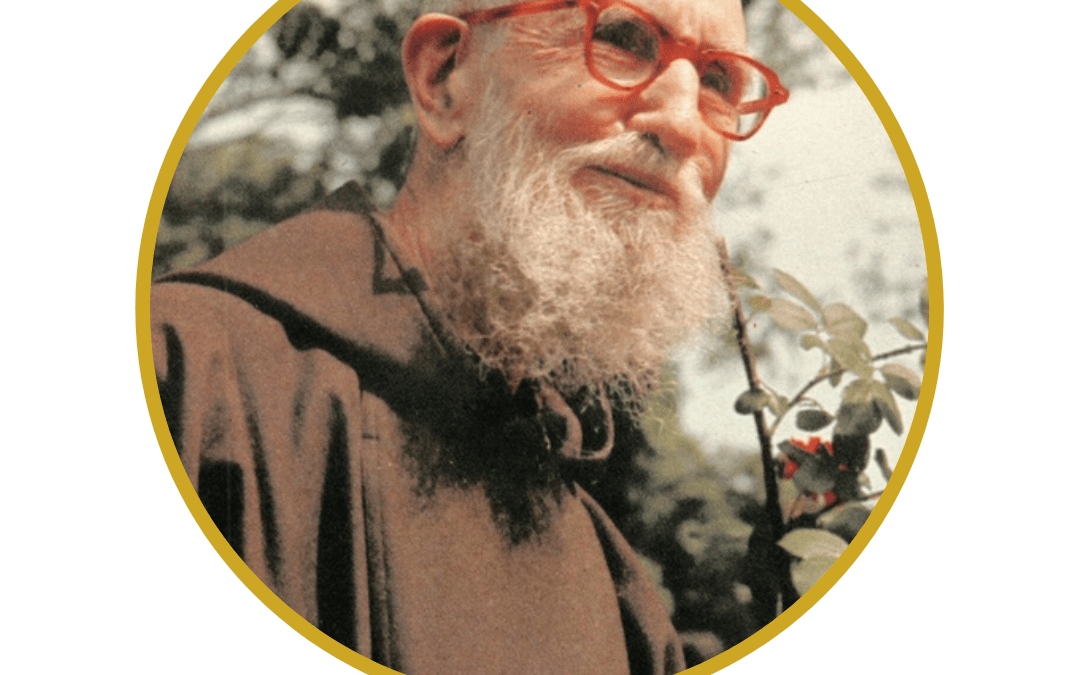
3 November: Blessed Solanus Casey. Born Bernard Francis Casey to Irish immigrants in 1870, he first considered the priesthood after witnessing a brutal murder as a young man. In seminary, he struggled with studies and mastering languages. Because of his poor grades, Blessed Solanus was dismissed. He was sent to a Capuchin Franciscan community. Blessed Solanus was hesitant but heard the Blessed Mother tell him to “go to Detroit” and so he did. He donned the Franciscan habit and chose the name Solanus, after a 17th-century missionary. Franciscan life was a good fit, but academic difficulties caused his superiors to decide he would remain a “simplex priest” (meaning he could not preach or hear confessions). Fr. Solanus was assigned to be the monastery’s porter: the main link from the friars to the outside world. He soon became renowned as “the doorkeeper” who gave gentle counsel and miraculous intercession. He would listen to anyone at any time, day or night. People would line up for blocks just to have a moment with him. He told them to “thank God ahead of time.” One story of his miraculous intercession is told about a friar who came to see Solanus on his way to have emergency dental work done. Fr. Solanus blessed him and told him to trust God. While the friar was at the dentist, a lady who came to visit the monastery brought Fr. Solanus two ice cream cones. Too busy to eat them, Fr. Solanus shoved the cones into his desk drawer, much to the dismay of his secretary. After more than half an hour, the friar returned from the dentist, his tooth found miraculously healthy. He went to thank Father Solanus, who pulled out perfectly frozen ice cream cones from his drawer on the hot summer day, which he offered to the friar to celebrate. Fr. Solanus was also known for quirky habits such as playing his harmonica to the monastery bees; for singing in a loud squeaky voice as he played his violin; and for eating his breakfast all mixed together as a penance– cereal, prune juice, coffee, and milk in the same bowl. Blessed Solanus’ last years were spent suffering severe pain but he never complained. He died on July 31, 1957, and tens of thousands lined up to view his body before burial. Thousands more have sought his miraculous intercession. Blessed Solanus was beatified in 2017. November 3 and July 30 are both dates associated with his feast.
Ideas for celebrating this feast day at home:
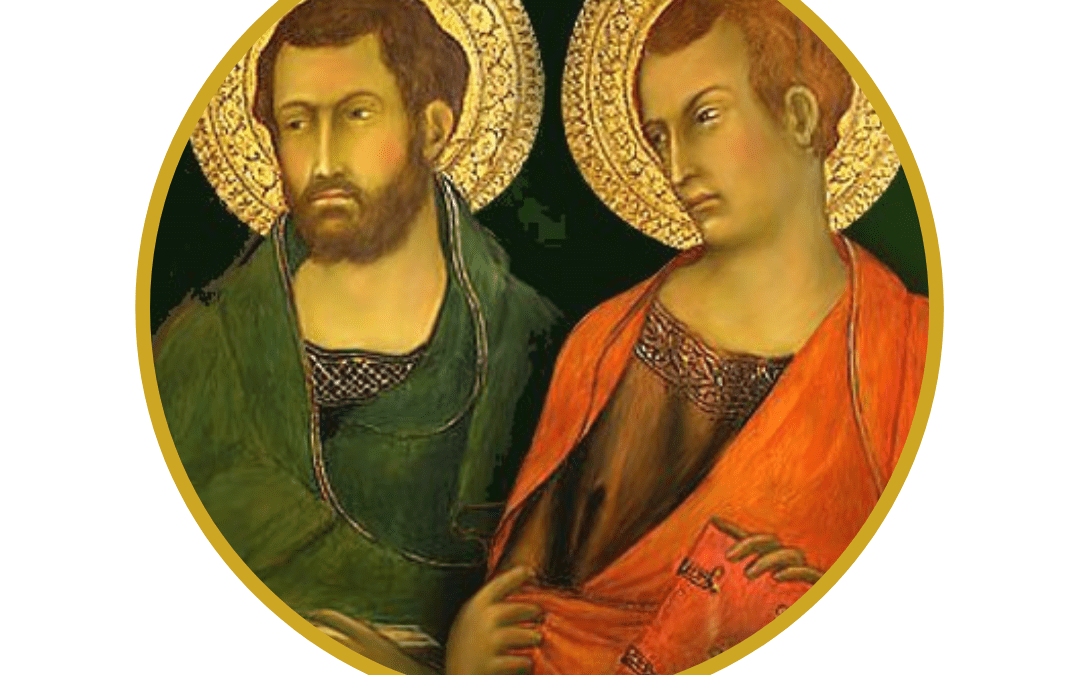
28 October: Feast of Saints Simon and Jude. Today the Church celebrates the feast of Saints Simon and Jude whose names occur together in the Canon of the Mass. These Apostles of Jesus were both early missionaries of the Church. Saint Jude, also named Judas Thaddaeus or just Thaddaeus, had the abbreviated forename of “Jude” to be clearly distinguished from Judas Iscariot. Saint Jude was the Apostle who asked the Lord at the Last Supper why He had manifested Himself only to His disciples and not to the whole world (John 14:22). Tradition holds that Saint Jude preached the Gospel in Judea, Samaria, Syria, Mesopotamia and Libya. The Apostles Jude and Bartholomew are believed to have been the first to bring Christianity to Armenia. St. Bridget of Sweden and St. Bernard had visions from God in which they were shown St. Jude as “The Patron Saint of the Impossible.” Saint Simon, also known as Simon the Zealot or Simon the Canaanite, was one of the most obscure among the apostles of Jesus. Not much is known about him; but he is thought to have been a fisherman. Born at Cana in Galilee, St. Simon was surnamed the Zealot because of his affiliation with “the Zealots” (a Jewish political party in opposition to pagan Rome). After Pentecost, Simon preached the Gospel in Persia, Asian Minor, and Egypt. He joined St. Jude in Syria and they were martyred there together. Simon is represented in art with a saw, the instrument of his martyrdom. Ancient tradition says St. Simon was sawed in half and St. Jude was beheaded with an axe. Saint Simon is the patron saint of curriers, sawyers, sawmen and tanners. Saint Jude is the patron saint of desperate situations, lost or impossible causes, hospitals and hospital workers.
Prayer
O God, who by the blessed Apostles have brought us to acknowledge your name, graciously grant, through the intercession of Saints Simon and Jude, that the Church may constantly grow by increase of the peoples who believe in you. Through our Lord Jesus Christ, your Son, who lives and reigns with you in the unity of the Holy Spirit, one God, for ever and ever. Amen. (from The Roman Missal)
Ideas for celebrating this feast day at home:
Recent Comments